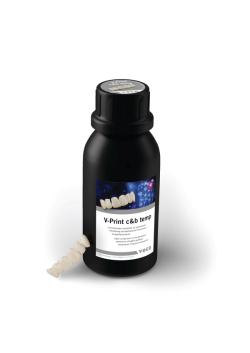- About Us
- Advertise
- Editorial
- Contact Us
- Terms and Conditions
- Privacy Policy
- Do Not Sell My Personal Information
© 2025 MJH Life Sciences™ and Dental Products Report. All rights reserved.
Restorative and Cosmetic Certifications: What They Are and What It Takes
2024 could be the year that you go for your extra certifications. Here’s what you should know about restorative and cosmetic certifications.
It’s a new year and a new chance to focus on your dental career development. If 2024 becomes the year you go for your additional certifications, here are a few things you should know about some common restorative and cosmetic certifications and what it takes to get them.
The Academy of General Dentistry
Regarding general dentistry, an excellent place to start to acquire certification is the Academy of General Dentistry (AGD), the professional organization representing the needs and interests of general dentists. The AGD offers its membership resources and support to deliver their patients the best possible dental care and oral health education. The AGD website says the organization aims to “advance general dentistry and oral health through quality continuing education and advocacy.”1 The AGD also provides education, networking, and leadership opportunities that help general dentists deliver the best possible care and improve the stability of their dental practices.
The AGD offers multiple member benefits, including accreditation and mastery certifications, the annual scientific session, and several practice management tools, including the career center, patient referral program, and patient education tools. Their continuing education programs feed into their fellowship and mastership awards. Plus, members have access to their online and print publications and podcasts.
The AGD offers 2 advanced certifications for their members, which include the following:
- AGD Fellowship Award (FAGD): The AGD Fellowship Award recognizes members for their dedication to quality continuing education (CE) and commitment to providing high-quality patient care.
- AGD Mastership (MAGD): Mastership is the highest honor within AGD, acknowledging a general dentist’s continuous commitment to delivering quality patient care through ongoing continuing education (CE). It represents a professional designation beyond fellowship, emphasizing excellence in dental practice.
The AGD requires a few things to achieve these certifications. First, to achieve fellowship, members must accumulate 500 hours of approved CE credits, pass a comprehensive examination, submit a formal application, pay a fee, and participate in a convocation ceremony at the AGD scientific session.
To read a step-by-step guide for FAGD certification, please click here.
The next level, mastership, needs a member to be an AGD fellow and a member of the AGD for 3 years by the last day of the year they apply for it. Mastership candidates must have an active dental license with no suspensions, revocations, probations, or disciplinary actions in the previous 5 years. Candidates must also complete 1100 approved CE hours, 400 of which are participation courses in specific disciplines and 600 of which meet specific hour requirements in distinct disciplines (and 500 of the 1100 hours can be from the original fellowship accumulation). Then, candidates must apply and pay the application fee and, if approved, attend the scientific session within 3 years of the approval to get their AGD Mastership.
To read the step-by-step guide for acquiring the MAGD, please click here.
Sheila Samaddar, DDS, FACD, FPFA, president of the DC Academy of General Dentistry and dentist at the South Capitol Smile Center in Washington, DC, says joining an academy such as the AGD is important for several reasons. The AGD is exclusively dedicated to serving the interests and professional needs of general dentists but also promotes education and advocacy. It helps dentists track the CE that dentists need to do regularly to keep their license. For example, the AGD keeps CE in an online record so that you can see everything you have ever done, including the discipline covered and the hours earned.
“It’s a great way to track and see where you are falling short and where you are doing well,” Dr Samaddar says, adding that dental students can join while still in school. “You can already start accruing your CE, like when you’re in high school and taking AP [Advanced Placement] classes. You can start working toward your postgraduate education while in dental school, and it’s easy.”
The costs of CE vary depending on the technicality and the discipline. Much of the CE is free or inexpensive. Many organizations offer free CE, and dental companies that want to earn a clinician’s business do as well. Some surgical or cosmetic CE can be more expensive as well as any programs that are more than 1 day, Dr Samaddar says.
Dr Samaddar also thinks young dentists who join the AGD should take the AGD Fellowship Exam as close to graduation as possible before they forget all the areas they touched on in dental school. Even if accruing the hours takes 5 or 10 years after graduation, young dentists can focus on getting CE instead of studying for the examination.
“Once you get into private practice, there are areas of dentistry that you don’t do regularly, depending on your practice area and the patient population,” Dr Samaddar says. “For example, I don’t do dentures, so I have forgotten some procedural things about dentures. My patient population happens to have teeth. So if you are good at dentures when you are a senior in dental school [but] you get out for 10 years and don’t do them, it’s going to be necessary to relearn many of those things.”
Dr Samaddar also advises dentists to refrain from believing that general dentists must be great at everything. Instead, dentists should find the 2 or 3 areas they like and focus on being the best they can be. Nurturing those skills and preferences can be rewarding.
Additionally, she thinks clinicians can benefit from residencies. With these opportunities, dentists are exposed to different skills, such as working efficiently and communicating with patients.
“Many new dental graduates should do a residency to get exposed to many different practice scenarios,” Dr Samaddar says.
The American Academy of Cosmetic Dentistry
Cosmetic dentistry is a natural choice for many dental professionals regarding additional certifications. The American Academy of Cosmetic Dentistry (AACD) is a group of dental experts, technicians, teachers, and researchers from 70 countries. This global reach gives AACD members global access to the latest information regarding cosmetic dentistry. Through accreditation, the Journal of Cosmetic Dentistry, and the AACD Annual Scientific Session, the AACD has become a critical organization for cosmetic dentistry.
The AACD states its mission on their website, which reads as follows2: “The American Academy of Cosmetic Dentistry® (AACD) is dedicated to advancing excellence in the art and science of comprehensive cosmetic dentistry and encouraging the highest standards of ethical conduct and responsible patient care.”
Furthermore, AACD members share a philosophy regarding restorative work for patients, focusing on responsible esthetics and aiming to be the main dental support for patients’ lifelong health, function, and appearance. AACD members also believe that esthetic dentistry should use evidence-based decisions, clinical judgment, and interdisciplinary judgment to enhance overall health and avoid harm.
The AACD created the AACD Accreditation and AACD Fellowship programs to provide advanced certification in cosmetic dentistry for dentists and technicians. The AACD has 2 certifications for dentists, which include the following:
- AACD Accreditation (AAACD): The AACD Accreditation program is a globally recognized credentialing initiative in advanced cosmetic dentistry. It emphasizes ongoing education, professional collaboration, and career development.
- AACD Fellowship (FAACD): The AACD Fellowship is the highest level of achievement for its members and involves fulfilling all requirements aligned with the AACD’s mission of education and excellence. Fellowship also serves as an evaluation tool for the Accreditation/Fellowship Committee to assess sustained clinical excellence and commitment to cosmetic dentistry among accredited members.
The process for these certifications has a few steps. Moreover, like the AGD certifications, these are sequential, meaning that candidates for AACD Fellowship must first be accredited.
To begin the AACD Accreditation process, candidates apply for and take the written examination at the AACD Annual Scientific Session or a testing center. Once they pass, candidates enter a 5-year period. Also, there are 2 required workshops to attend: the AACD Accreditation Workshop, which explains the accreditation process and resources available to candidates, and the AACD Criteria Workshop, which details how AACD Accreditation examiners evaluate cases for consideration.
Next, clinicians submit 5 clinical cases that follow their submission guidelines for evaluation. Candidates must include one case of each of the following types:
- Six or more indirect restorations treating upper incisors and canines
- Two or more indirect restorations treating upper incisors with adjacent teeth that are not treated
- Tooth replacement, either bridge or implant
- Class IV direct resin replacements that replace at least 10% of the facial surface or a diastema closure
- Six or more direct resin veneers treating upper incisors and canines
Once the candidate passes the clinical cases and the written examination, attends at least half of the AACD Annual Scientific Session meetings since taking the written examination, and pays the application fee, the clinician will be invited to sit for an oral examination. The AACD Accreditation candidates are expected to know the facts of their clinical submission and be prepared to answer questions about them without notes regarding case selection, diagnosis and treatment planning, materials, and techniques. In addition, candidates will create a treatment plan for a preselected case chosen and shared by the examiners. The oral examination is a pass/fail assessment, with the outcome determined by the examiners.
Candidates receive their AACD Accreditation at the next AACD Annual Scientific Session once they pass the oral examination. Candidates can retake the examination if they fail their first oral examination but must restart the process if they fail a second time.
To read more about the AACD Accreditation process, please click here.
Fellows of the AACD have a few steps to take after accreditation. First, AACD Fellowship candidates must apply and pay the application fee. Then, they will submit 50 cases to the executive office, each of a different patient, per the photography and submission guidelines. Candidates must receive at least 2 passing grades from 3 AACD Fellowship examiners for 45 of 50 submitted cases.
Per the AACD website, AACD Fellowship mentors—the AACD Fellowship examiners—can help with the AACD Fellowship process. The AACD recommends the following for accredited clinicians pursuing their fellowship with the AACD:
- Work with only 1 mentor and confirm they are a calibrated AACD Fellowship examiner.
- Ensure the submitted case photography is excellent. Use proper magnification, exposure, and angulation and provide all 4 views to the mentor.
- Use the AACD PowerPoint template on the AACD website to send cases for evaluation.
- Compress photos for email transmission.
- Send 10 to 12 cases together to learn what examiners consider suitable for submission.
- Be specific when asking the AACD Fellowship mentor whether to submit a case and choose carefully to avoid submitting a case far below required standards, which could reflect poorly on the overall submission.
- Respect the AACD Fellowship examiner’s time by avoiding asking for feedback shortly before a submission deadline.
- Remember that positive feedback from the mentor does not guarantee success.
To read more about the AACD Fellowship process, please click here.
Career development can take many forms. Getting additional certifications is one path you can take. Restorative and cosmetic certifications with the AGD and the AACD offer a defined path to development with established standards to signify achievement, which can lead to enhanced patient outcomes, increased career satisfaction, and new letters following your name in your email signature.
References
About us. Academy of General Dentistry. Accessed February 20, 2024. https://www.agd.org/about-agd/leadership/about-us
About AACD. American Academy of Cosmetic Dentistry. Accessed February 20, 2024. https://aacd.com/about



